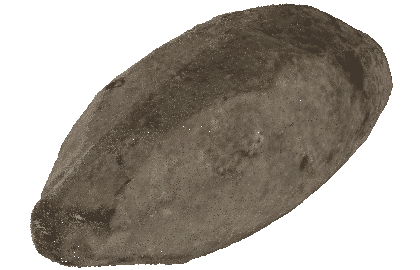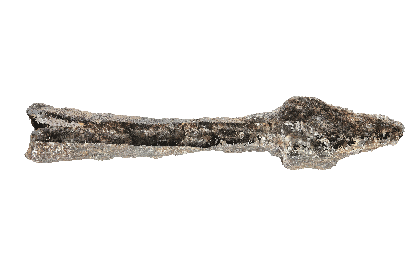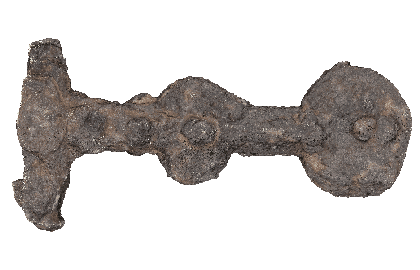Inventory number: PC10-2005-539
Name of the object: Sling projectile
Material: metal, lead.
Type: weaponry
Shape: bi-conical Type 2b of Völling (1990)
Dimensions: length: 4,1 cm, width: 1,6 cm, weight: 45 gr
Chronology: s. I BC.
Survey: july 2010
Provenance: sector 2.
Description: Lead sling projectile made in a two-part mould. One end is crushed and it has an incision on one side. This damage could be the result of impacting against a hard surface. Lead sling projectiles originated in the Greek world, where they are documented for the first time at the end of the 5th century BC. It seems that they started to spread following Roman expansion and, during the Roman Republican and Imperial Periods, they are documented throughout the Mediterranean


